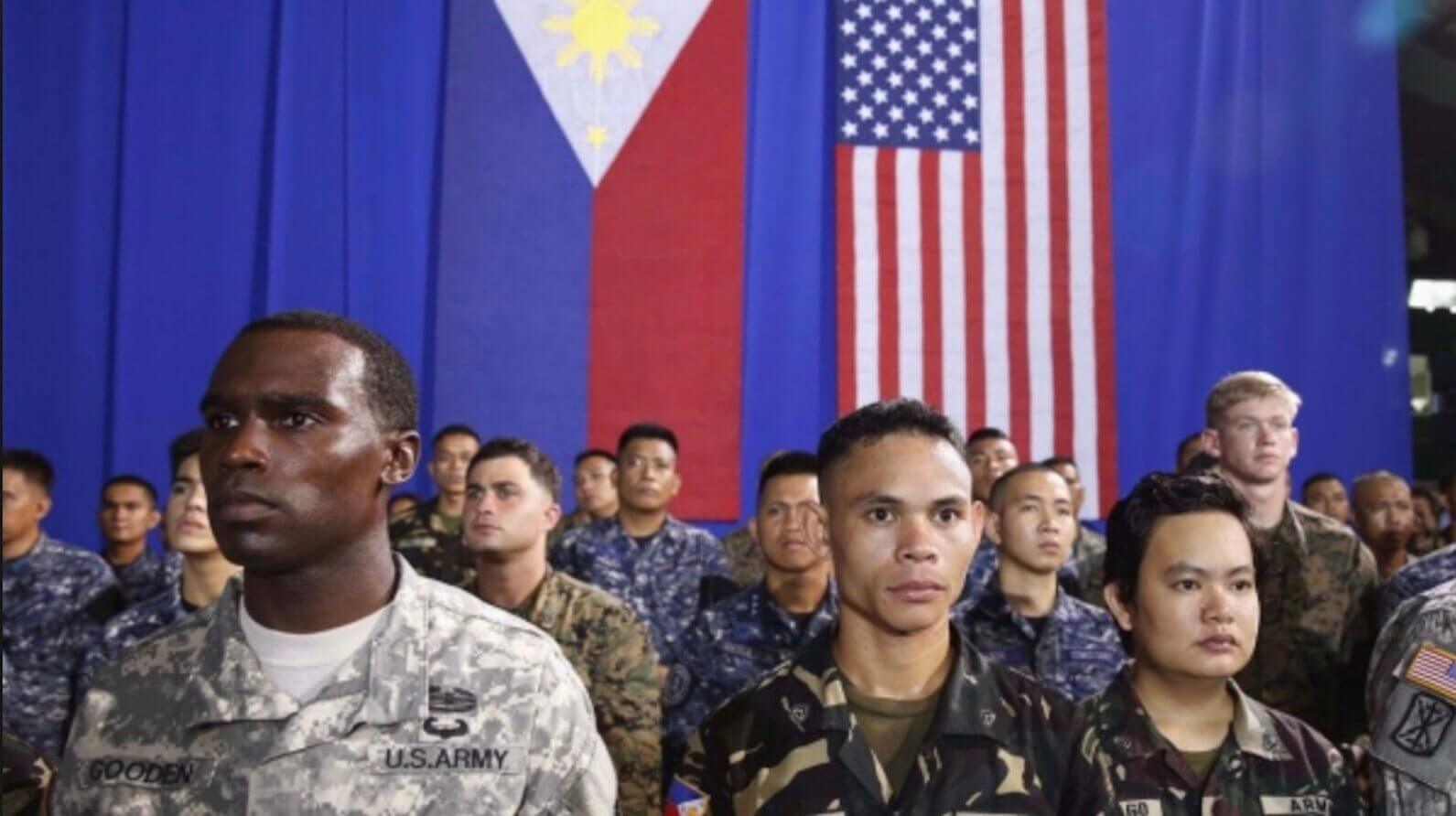Last month, the Philippines suspended the abrogation of its Visiting Forces Agreement (VFA) with the United States (US) by another six months. This was the third time that its cancellation was suspended and the decision was once again welcomed by the White House. The VFA came into effect in 1998 and provided a framework for legal status to thousands of US troops in the Philippines for military exercises and promised humanitarian assistance. However, while the situation in the South China Sea remains as volatile as ever, the Philippines continues to hang on to an agreement that seemingly hasn’t helped its cause. In this light, what purpose does the VFA still serve that the Philippines and the US continue to keep hanging on to the agreement?
The Scarborough Shoal, which is located within the Philippines’ Exclusive Economic Zone (EEZ) and claimed by the Philippines, has a near-constant Chinese coast guard presence around it. Tensions with China escalated in 2012 when a Philippine aircraft sighted a group of Chinese fishermen anchored in Scarborough Shoal. As the dispute worsened over the following months, Manila threatened to maximise US involvement in the issue. While the US reaffirmed its alliance obligations and pledged to help build its ally’s maritime capacity, it did not promise to intervene directly. It is believed that the then US assistant secretary of state, Kurt Campbell, negotiated an immediate, mutual withdrawal in early June.
So while the US may have avoided direct intervention against China, a defence mechanism like the VFA at least provided Washington with a channel to effect change. Moreover, the suspension of the VFA’s abrogation continues to serve as space for both countries to negotiate a better agreement with improved terms that are agreeable to Washington and Manila. “Bilateral talks take time and effort. This is good for agreements that are well thought out. The breathing space the extension creates could allow, for example, the initial framework or guiding parameters for a better arrangement. That could then be followed by the final better agreement or terms,” Philippine Deputy Speaker Mikee Romero told the Philippine News Agency following the latest extension.
Furthermore, the prospect of the US’ growing presence in the volatile waters in the future is another reason for Manila to utilise the VFA as a channel of communication and possibly even improve its security relationship with Washington. “The US is expected to actively move in the region due to their Free and Open Indo-Pacific Strategy in the years to come, so our engagement with them has strategic importance,” Ruffy Biazon, a member of the Philippines’ House of Representatives, said.
This hope is not without foundation. The South China Morning Post (SCMP) reported that early this March, the head of the US’ Indo-Pacific Command, Admiral Philip Davidson, submitted a proposal to Congress to increase its spending by an additional $27.3 billion for new military construction and to boost cooperation with allies to maintain an upper hand over China. This spending includes $4.6 billion for the Pacific Deterrence Initiative.
Furthermore, the VFA allows the US to maintain a troop presence in the region, which is essential to pursue its Indo-Pacific security interests that mainly involve deterring China from aggression in the volatile waters. While the US has not engaged in direct military conflict with Beijing thus far, its VFA-approved presence is enough to preempt a conflict from escalating. Perhaps Beijing understands that in case a conflict escalates beyond the usual skirmishes, the US might utilise its large troop presence in the Philippines and Japan to retaliate, especially since it is bound by agreements with several Indo-Pacific neighbours to defend them in case an armed conflict arises in the region.
Additionally, military troops from both sides get to participate in joint training drills through the VFA. In an effort to contain and encircle China in its own region, the US utilises its bases in the South China Sea to challenge Chinese presence there through enhanced Freedom of Navigation Operations and joint war exercises with its allies and defence partners. For instance, the Balikatan exercises are designed to maintain and develop the two countries’ security relationship through crisis-action planning and enhanced training to conduct counterterrorism operations, and by promoting interoperability of forces. The 36th exercise was held in April. Crucially, the US hopes to keep the VFA functional because losing the Philippines’ strategic advantage as a forward outpost will be expensive to the US military operations if its troops are launched from its bases in Guam, Honolulu, Japan, or South Korea.
Lastly, the VFA allows for the participation of the US military in humanitarian assistance, disaster relief cooperation, and joint counter-terrorism efforts in the southern Philippines, where the most violent of the Islamic separatist groups such as the Abu Sayyaf Group (ASG) operate out of. The US military has committed thousands of troops to combat radical Islamic groups in this region over the years to secure the Philippines’ national security. Abrogating the VFA would also mean losing out on these internal security benefits.
With only a few months left in office until the nation’s next general election, President Rodrigo Duterte will leave the fate of the pact to his successor. This year, the US and the Philippines celebrate 75 years of diplomatic relations. The anniversary also coincides with a time when Chinese aggression in the region is at an all-time high and therefore, the stakes of abandoning this agreement could not be higher for either country. Until the US and the Philippines negotiate better terms that are more suitable to both sides, the VFA provides a necessary channel to continue dialogue and a functional relationship to keep China at a safe distance.
Does the USA-Philippines Visiting Forces Agreement Still Serve its Purpose?
While the Visiting Forces Agreement needs to be reworked according to the changing security situation in the Indo-Pacific, it still has benefits to offer the Philippines and the United States.
July 23, 2021

SOURCE: TWITTER
